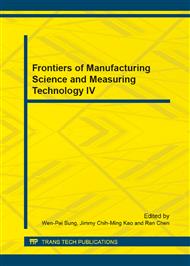p.587
p.591
p.595
p.599
p.603
p.608
p.612
p.616
p.622
Numerical Investigation of Choking Cavitator Based on Orthogonal Experiment
Abstract:
The different structures of choking cavitator were studied by using numerically simulation based on the orthogonal experiment. Many different structures of choking cavitator were researched to get a set of parameters which can produce much stronger intensity of cavitation. The results of investigation show that the optimal values of characteristic parameters are the optimal flow value of 1.5 m3 / h, entry point of the optimal value of 35 o, the outlet diameter of 9 mm, the back pressure of 70 kPa and the throat length of 70 mm.
Info:
Periodical:
Pages:
603-607
Citation:
Online since:
August 2014
Authors:
Keywords:
Price:
Сopyright:
© 2014 Trans Tech Publications Ltd. All Rights Reserved
Share:
Citation:


